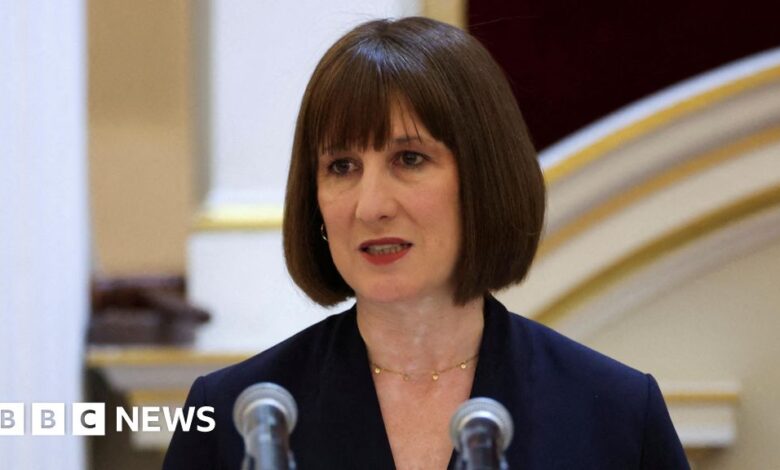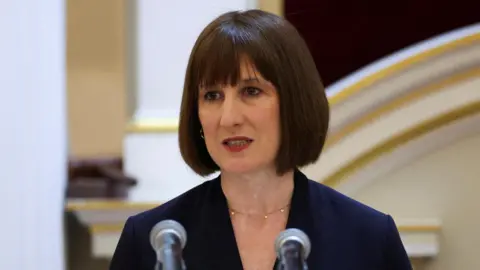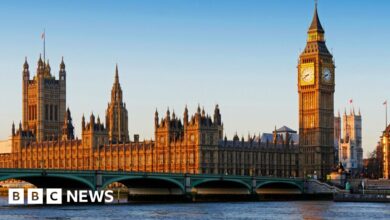Market trouble threatens Labour’s economic plans

 Reuters
ReutersNothing has been more important to the Labour Party under Sir Keir Starmer than economic credibility.
Chancellor Rachel Reeves has set out clear fiscal rules, such as getting debt falling as a share of national income by the end of this parliament, and she has made sticking to these rules a crucial test of the government’s credibility.
That’s what makes the recent rise in government borrowing costs potentially so dangerous for Reeves, the Treasury and – arguably – Sir Keir Starmer’s entire political project.
If the government has to spend a lot more money paying interest on debt, then it is less likely to meet its rules.
On current trends, 26 March is set to become a critical date.
That is when the independent Office for Budget Responsibility (OBR) will deliver its latest forecasts, including an assessment of whether the government is on course to meet its fiscal rules or not.
Suppose the OBR says the government is not on course. It’s important to stress this may not happen – but it is something that senior government figures are growing more jittery about by the minute.
Reeves would have a decision to make.
She has previously committed only to make significant tax and spend announcements once a year at the autumn Budget.
A Treasury spokesperson said last night that “meeting the fiscal rules is non-negotiable”.
That would suggest she would have to break her commitment and announce, or at least pave the way for, measures to bring the government in line with its rules.
What could that mean?
In principle, it could mean either tax rises or spending restraint.
In practice, given the announcement of a significant increase in employers’ National Insurance rates in October, the government’s view is that it would have to mean spending restraint – Darren Jones, the Chief Secretary to the Treasury, practically said as much in the Commons today.
To be clear, spending restraint would not necessarily mean spending cuts, just much lower spending increases than would otherwise happen.
This is where economics could collide with politics fast.
It’s all very well for the Treasury to take measures to soothe the bond markets, where government debt is traded.
But just because a strategy is deemed the most economically viable available, that doesn’t mean it is politically viable in a Labour Party made up of MPs who have spent the past 14 years decrying Conservative austerity.
Many Labour MPs, among them cabinet ministers, believe there is little fat left to trim from the state.
They were already anxious about a tough multi-year spending review, expected to conclude around June, before borrowing costs rose.
There is almost a risk of a paradox: that any acts of spending restraint visible and significant enough to calm the markets might, by definition, be too visible and too significant to fly politically among Labour MPs – especially after the controversy of the cut to the winter fuel payment for pensioners.
Labour figures argue that successive Conservative governments dealt with similar problems by piling the most painful spending measures towards the end of five-year forecast periods – hoping that by the year at which those “pencilled-in” measures were reached, circumstances would have changed.
But some also voice a fear that – precisely because of the Conservatives having done this – repeating the trick would be given short shrift by the markets: the fiscal sins of previous governments being visited on this new one.
Unlike recent Conservative debates on economic policy, the Labour Party has one big asset.
In 2022, when Liz Truss decided to go big, with a radical tax-cutting agenda, the Conservative Party had no consensus on how to approach the economy.
The 2022 leadership election in which Truss defeated Rishi Sunak was essentially a clash of economic ideas.
She won that argument with Tory members, having lost it among the party’s MPs – and then lost it unambiguously with the public and the markets within 49 days.
The Labour Party, give or take some sotto voce debates about tax for the wealthiest and welfare for the poorest, does broadly have an economic consensus, especially when it comes to what the Conservatives did wrong.
But what if these shared beliefs in how best to run the economy turn out to be products of the low interest rate era?
And how do you maintain that consensus if the markets disagree?
This is a political worst case scenario for Reeves.
Asking influential Labour figures about the markets this morning was to be told that lines go down as well as up, that the markets can move the other way in rapid time.
But all acknowledge that it is a bad sign when the value of the currency goes down at the same time as the cost of borrowing goes up.
One government source said to me: “It’s definitely not tin hat time yet.”
But all are watching anxiously to see how things develop.




